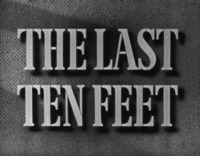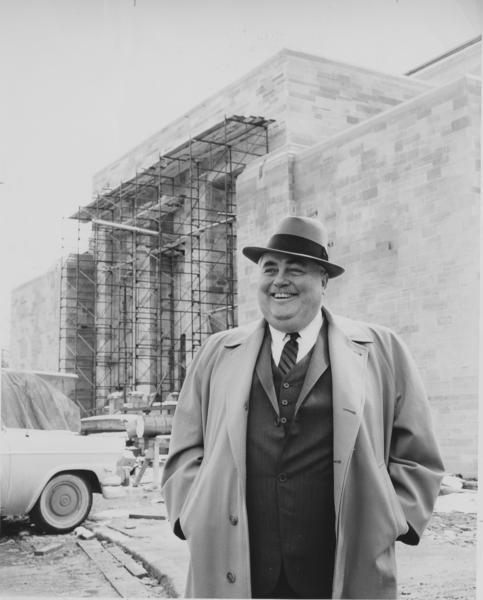Browse Exhibits (175 total)
Photochemical Film Lab List

As a communal resource, we have been working on consolidating and adding to various existing lists of film laboratories still in operation around the world with all relevant contact information, websites, country and when relevant, the formats supported. The focus of the updated list is primarily photochemical labs. This list includes commercial film labs, film archives' in-house labs, and community or artist-run labs. To the best of our knowledge, this list is accurate as of 15 January, 2021.
This list is the result of a consolidation and revision of data from previous similar efforts by FIAF (2013 film lab survey), AMIA's Film Advocacy Task Force, Mick Newnham (Australia National Film and Sound Archive), Andrew Oran (Fotokem), Christian Richter (Kodak), and the many FIAF affiliates who responded to our request for updated information on lab closures.
Offered below are several pages that may help you visualize and organize your search. The first offers an interactive Google Map showing the locations and details of all listed labs, followed by labs organized by continent, and finally a comprehensive list of all film labs.
Should you hear about the closure of a film lab or know of a lab left off this list, please let us know by emailing Rachael Stoeltje, Director of IU Libraries Moving Image Archive, at rstoeltj@indiana.edu.
Herman B Wells Home Movies: Presented by University Archives and the IU Libraries Moving Image Archive
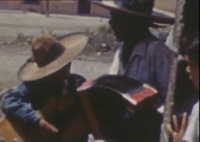
Presented by the University Archives with the assistance of the IU Libraries Moving Image Archive.
Herman B Wells, Indiana University President from 1937-1962, is remembered for his friendly demeanor, his desire to form meaningful connections with students, and his crucial role in realizing change for the University. He loved to travel, and he often used his time abroad to recruit international faculty and students. Domestically, his fierce promotion of academic freedom attracted professors from all over the country. At the local level, with the help of like-minded students, he cracked down on discrimination during his time as President, desegregating housing and dining on campus and promoting the recruitment of nonwhite athletes; these actions had ripple effects in lessening discrimination in downtown Bloomington as well. It is due in large part to his efforts that IU became recognized as a top-tier public university.
This collection contains twenty-three home movies filmed by Wells between the late 1930s and early 1950s. The films provide a kind of insight into Wells' life that even his detailed autobiography, Being Lucky, did not. Although his written reflections upon his career at Indiana University are of course extremely valuable, the visual record he left behind should not be perceived as any less valuable. Nonwritten sources add depth of understanding to a historical narrative. Wells' films can be thought of as a different type of autobiography, one that details his personal, rather than solely his professional, interests. What he deemed worth capturing helps us better understand him as a person and gives us more information about the motives behind his professional decisions.
Wells was very interested in the people and the culture of every place he visited. Much of his footage depicts the ordinary citizenry conducting their everyday affairs. He also appears to have enjoyed the natural world immensely, as indicated by his frequent focus on the mountains, rivers, lakes, plants, and animals of the particular place he was in. There are also numerous shots of the local architecture in most of the places he chose to record; one may therefore conclude that this was of interest to him, too. And then there is his evident love for his family. His mother was often his traveling companion, and as a result, she appears in many of his films. Wells' home movies provide further evidence of his people-focused personality and cultural and scientific curiosity, and help to further explain his desire to hire more international faculty, promote study abroad programs, encourage academic freedom, and create an inclusive campus community during his time as University President. Click on any of the section headings to the right to access the digitized home movies by category.
Further readings
Capshew, James H. Herman B Wells: The Promise of the American University. Bloomington: Indiana University Press, 2012.
Wells, Herman B. Being Lucky. Bloomington: Indiana University Press, 1980.
International Federation of Film Archives (FIAF) Historical Audiotapes
The International Federation of Film Archives (FIAF) historical audio tapes which document the history of the film archive global community have been digitized for preservation purposes and are available now to listen to. The tapes document the FIAF Congresses and Executive Committee meetings, dating from 1975-2007. Those dating 25 years or older are now accessible and over time, more recordings will be made available when they become 25 years or older. These audio recordings document the developments and guiding history of film archives’ standards and philosophy and hence a portion of the field of film preservation. These tapes will be a remarkable resource looking at the field and the evolution of the film archive movement.
Since 2017, Indiana University Libraries Moving Image Archive, a FIAF Member, is the archival home of the original tapes which are now stored in IU’s Auxiliary Library Facility vault at 50° F and 30% RH where they will be preserved for many years. And the newly digitized files, kept both in IU’s data storage repositories and on hard drives in FIAF’s Brussels office, will serve as access and digital preservation copies.
IULMIA has digitized the entire FIAF historical audiotape collection which contains 684 audio cassette tapes, 31 ¼” audio tapes and 4 minidisks.
Making "Ripples" and the Emergence of National Instructional Television (N.I.T.) 1969-1973

Ripples was a thirty-six part educational television series for 5-7 year-olds and was initiated and coordinated by National Instructional Television (NIT) and produced by the Northern Virginia Educational Television Association. The creators of the series prided themselves on creating a televisual educational experience that was focused on helping children process their encounters with everyday people and places, with an emphasis on play and an understanding of human feelings. The concept for the program grew out of a consortium of child educators and television producers, who met in Bloomington in 1969. Their conversations about the future of educational TV broadcasting, with regards to content creation, distribution, and the use of moving image technology as an important teaching tool, marks an important period in the history of educational media, as well as Indiana University's role and continued presence in that history. The following pages highlight some of the materials related to the Ripples program, which are held at the Indiana Libraries Moving Image Archive and are part of a collection that was received from the Agency for Instructional Technology (AIT), which closed in 2015. Individual episodes of Ripples can be viewed at Indiana University Libraries Media Collections Online or by clicking on the "Ripples Episode Gallery" link further down below.
Wordsmith

This popular Agency for Instructional Television (AIT) series is based on contemporary concepts of vocabulary and linguistic theory. Each program centers on a themes like food, size, or communication. But from then on, anything goes--word cells cavort about to instruct and entertain, animated characters get their words in edgewise, word lore of all kinds lights up the nooks and crannies of the English language. Designed to arouse students curiosity about words and to sharpen their awareness of language, the series includes standard vocabulary development and incorporates terms from specialized vocabularies, foreign languages, and slang.
Bob Smith, wordsmith and author, has taught English, philosophy, psychology, education, Latin, and mathematics at levels from the seventh grade to post graduate study. His television work began in 1962. Mr. Smith holds a Bachelor of Arts degree from the University of Chicago, and three advanced degrees in philosophy and linguistics from Gonzaga University and the University of Michigan.
Watch the intro to Wordsmith in the video below!
Inside/Out
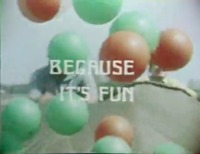
From the Inside/Out Teacher's Guide
The goal of health education is to promote the well-being of children. This is also the goal of "Inside/Out." Yet "Inside/Out" with its distinctive approach is different from traditional health education. The series emphasizes communication skills, involvement of the learner, and interacting with others rather than rote memorization of the bones, muscles, and good health practices.
"Inside/Out" relies on student listening, valuing, and decision-making rather than on the presentation of the moralistic rules for healthy living often found in personal hygiene courses. The lessons are not even called mental health or social health; the emphasis in the series is on helping the whole child develop a personally effective life style. The difference is that
"Inside/Out" teaches mental health instead of teaching about it. The programs and lessons deal with situations that, if poorly handled, often cause the human hurts that appear to underlie many kinds of self-defeating behavior. "Inside/Out" provides. a "feelings" approach to health education. The series recognizes that the way a person lives, the kinds of decisions he makes, and how he feels are as important to his well-being as heredity, environment, and the medical care he receives. The programs can also be used as opportunities to initiate topics or categories of health education required by state or local boards of education. Studies of the effects of alcohol and tobacco, drug abuse, family living, safety, nutrition, and human anatomy can all be approached through the affective lessons of "Inside/Out."
McRobbie-Gair Family Home Movies Collection
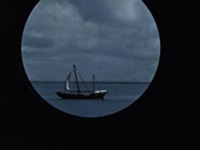
Comprised of ten home movies taken around the globe, the McRobbie-Gair Family Home Movies Collection are an expansive, surprisingly beautiful, and intimate account of the travels and domestic life of the family of IU’s 18th President and now University Chancellor, Michael A. McRobbie between the late 1930s and early 1950s. Most of these movies were shot by Chancellor McRobbie’s maternal grandfather, Richard Leslie (Les) Gair (1892-1970), a prominent businessman and philanthropist from Melbourne, Australia, who Chancellor McRobbie greatly admired. They were donated by Chancellor McRobbie to IU’s Moving Image Archive in 2016.
Mr. Gair acquired a 16mm magazine loaded Ciné-Kodak camera just a few years after this technology was introduced in 1936 and very new in Australia. He then proceeded to record the travels and domestic life of his family mainly in color for the next two decades from the late 1930s to the mid 1950s.
These movies record travel in Europe, South Asia, Africa, Australia, and North America, and tender family footage of birthday parties, beach days, and backyard gatherings. Capturing compelling footage from across Australia to the Scottish Highlands, from the pyramids of Egypt to the Austrian Alps, and from the ruins of Pompeii to the wide expanses of the Grand Canyon, and so much more, the movies are a sweeping example of one of the oldest of amateur filmmaking traditions: the travelogue.
They are also important historic and cultural snapshots, revealing, for instance, the rise of Nazism in Europe and WWII propaganda in London, farming techniques in Scotland in the 1950s, and footage of Aboriginal families and the Hermannsburg Lutheran mission in the Northern Territory of Australia. The staggering range of countries presented alongside the collection's focus on capturing everyday settings and people offers an enticing glimpse into the styles, customs, and habits of diverse cultures. The collection offers abundant sequences from all over Australia and England, but also includes footage from Belgium, Germany, Austria, Italy, France, Switzerland, Luxembourg, Ceylon (modern-day Sri Lanka), the city of Aden in Yemen, Egypt, Sweden, Scotland, and several other yet to be unidentified locations.
One of the highlights of the collection are four movies documenting a round-the-world trip that Mr. Gair and his wife, Grace Victoria Gair (1900-1990), took in 1939, returning home to Australia just as World War II broke out. As well as the picture it presents of the world just before that devastating war, it is a relatively rare example of 16mm color home movies from before World War II. These four movies are part of the Round the World Trip 1939 series and can be viewed here.
Beyond their historic significance and familial importance are the creative and often staggeringly beautiful compositions of all the movies in this collection, revealing Mr. Gair’s unassuming penchant for capturing the simple beauty of nature. A considerable amount of footage foregoes the customary amateur focus on historic sites or tourist attractions, although they are included too, for the vibrant beauty of a bed of flowers blowing in the wind, a burnt orange sunset closing out the day, or the surreal magic of watching the sea disappear through the porthole of a gently rocking passenger ship. Maybe even more enticing are the many portrait shots of family, friends, and strangers alike, as they stand awkwardly in front of the camera as their reactions shift from bemusement to embarrassment to discomfort; a style somewhat reminiscent of Warhol’s Screen Tests of the 1960s.
The movies also include a wide variety of creative and colorful title cards, cueing us to changes in location and shuttling us along from one scene to the next. These cards range from simple location markers to artfully composed and designed descriptors. A sampling of title cards can be found in this exhibit, under the segment, "Home Movies and the Art of the Title Card." The tireless and meticulous work involved in the digitization of these movies was carried out by Colorlab, a film laboratory in Rockville, Maryland. The movies were stored for many decades in conditions not conducive to their preservation and were already in an advanced state of deterioration due to vinegar syndrome when they were donated to IU. Highly specialized equipment and conservation techniques were required just to digitize them. To read more about the collection's conservation by Colorlab, check out "Shrunken, Brittle, and Smelly: Extreme Conservation for a Deteriorated Collection."
You are encouraged to take a moment and journey back in time with this collection. To see through someone else’s eyes, to watch them struggle to compose a shot, to get that pan or tilt just right, to pick and choose what to remember, lets you peek inside another mind and uncover what interested them, captivated them, charmed them. The movies are full of popular locations and identifiable sites but also include mysterious places and never-to-be-known people, who are all connected now because of a camera running 16mm motion picture film. The McRobbie-Gair Family Home Movies Collection offers you the opportunity to briefly see the world from a different time, place, and perspective, and that’s a wonderful, powerful thing.
Alan Lewis Collection
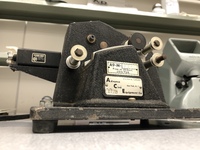
The Alan Lewis Collection, donated in 2017, is comprised of nearly two hundred small gauge movie cameras and fifty projectors, film editing and viewing equipment, along with many of their original cases, sales boxes, instruction manuals, and accessories. The diverse collection represents a unique selection of moving image technologies produced from the 1920s through the 1980s, showcasing a diversity of film gauges and formats - from regular 8mm, double 8mm, and 16mm on spools or in magazines to super 8mm cartridges.
Alan Lewis, a moving image archivist most recently for the National Archives in Washington D.C., worked for the Public Television Library (PTL) of PBS right here in Bloomington, IN between 1973-74. PTL worked closely with the Indiana University Audio-Visual Center (IUAVC), a precursor to the IU Libraries Moving Image Archive (IULMIA), and WTIU Public Television to acquire nonlocal TV programs for national distribution. Later in his career, while working for the Motion Picture, Sound, and Video Branch of the National Archives, Alan began collecting the very technologies that created the moving images he oversaw during his career.
Overall, the collection reveals the stylistic evolution and vast diversity of amateur moviemaking equipment, as well as its beauty. From the extravagant ostrich leather casing of the 16mm Ciné-Kodak Model B to the industrial portability of the 8mm Revere Series exists the aesthetic blending of art and utility. As a testament to the craftsmanship of the collection objects, many cameras and projectors are still in working order! A selection of camera motor function recordings can be heard in the exhibit's Audio Archive.
The collection represents an important form of moving image history and technology outside of commercial Hollywood production. These are the objects that captured and shared the everyday, the familial, the nontheatrical, and so much more. A few of the cameras even hold film from their last cinematic adventures, patiently guarding their visual memories with stoic resolve until they might one day reveal their truths to the world.
Choose a motion picture brand below to view an image gallery of select collection objects. Owner's manuals, advertisements, and promotional materials are included with select objects when available. Some galleries include an audio recording of camera motor function when in working order. These cameras are marked with an * for easy identification and an audio archive with all camera recordings is provided at the bottom of the brand list for convenience.


